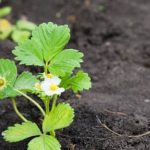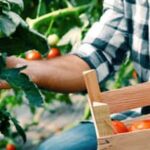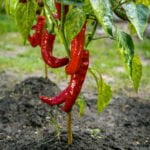Container gardening is a popular and practical way to grow vegetables, especially for those with limited space or less-than-ideal growing conditions. In this article, we will explore the world of vegetable container gardening and provide you with a wealth of information and inspiration, including vegetables container gardening pictures.
Container gardening involves growing plants in pots, baskets, or other containers rather than in the ground. This method offers many benefits, such as the ability to control soil quality, better pest management, and the flexibility to move your garden around as needed. It’s a fantastic option for urban dwellers, apartment renters, or anyone with limited outdoor space.
In the following sections, we will guide you through every aspect of vegetable container gardening, from choosing the right containers and selecting suitable vegetables to planting and maintaining your garden. Whether you’re a beginner looking to start your first container garden or a seasoned gardener seeking new ideas and tips, this article has something for everyone. So let’s dive in and get ready to grow an abundance of delicious vegetables right on your doorstep.
Choosing the Right Containers
When it comes to vegetable container gardening, choosing the right containers is crucial for the success of your plants. The first thing to consider is the size of the container. Larger vegetables such as tomatoes and peppers will need a deeper container, while smaller vegetables like lettuce and radishes can thrive in shallower pots. It’s important to ensure that the containers have drainage holes to prevent waterlogging, which can lead to root rot.
Another factor to consider is the material of the containers. Plastic and resin pots are lightweight and easy to move around, but they can deteriorate over time when exposed to sunlight. Clay pots are a popular choice due to their aesthetic appeal and ability to regulate soil moisture, but they can be heavy and breakable. Fabric grow bags are becoming increasingly popular as they provide good aeration for roots and can be folded away for storage.
It’s also important to consider the location of your vegetable container garden when selecting containers. If your garden receives a lot of direct sunlight, you may want to opt for lighter colored pots that won’t absorb as much heat and potentially damage your plants’ roots.
| Container Type | Pros | Cons |
|---|---|---|
| Plastic/Resin Pots | Lightweight, Easy to move around | Deteriorate over time in sunlight |
| Clay Pots | Aesthetic appeal, Regulates soil moisture | Heavy, Breakable |
| Fabric Grow Bags | Aeration for roots, Foldable for storage | N/A |
Choosing the right containers is essential for successful vegetable container gardening. By considering factors such as size, material, and location, you can create an ideal environment for your vegetables to thrive. With proper care and maintenance, your vegetable container garden will provide you with a bountiful harvest of fresh produce throughout the growing season.
Selecting the Best Vegetables for Container Gardening
When it comes to choosing the best vegetables for container gardening, there are several options that thrive in a confined space. Many vegetables can be successfully grown in containers, as long as the proper care and attention are given. Let’s take a look at some of the top vegetable choices for container gardening.
Tomatoes
Tomatoes are one of the most popular choices for container gardening. They come in a variety of sizes, from small cherry tomatoes to large beefsteak tomatoes, making them versatile for different container sizes. Ensure the container is large enough to accommodate the tomato plant’s root system and provide support for the growing vines.
Peppers
Peppers, including bell peppers, chili peppers, and sweet peppers, are excellent candidates for container gardening. They require ample sunlight and warmth to thrive, so placing the containers in a sunny spot is crucial. Make sure to use well-draining soil and water consistently to keep the plants healthy.
Herbs
Basil, parsley, mint, and other herbs flourish in containers and can be easily harvested as needed for cooking or garnishing. Herbs generally do well with minimal maintenance but do require regular watering and occasional pruning to encourage new growth.
These are just a few examples of vegetables that are well-suited for container gardening. Each vegetable has its own specific care requirements, so it’s important to research and understand the needs of each plant before starting your container garden. With careful attention and proper care, you can enjoy a bountiful harvest of fresh vegetables right from your own patio or balcony.
Container Gardening Essentials
When it comes to container gardening, having the right tools and supplies is essential for success. Whether you’re a beginner or an experienced gardener, there are certain items that are necessary for maintaining a thriving vegetable container garden.
Containers and Soil
The first step in creating a successful vegetable container garden is choosing the right containers and soil. When selecting containers, make sure they have proper drainage holes to prevent waterlogging. Plastic, ceramic, or wooden containers are popular choices, but be sure to avoid using metal containers as they can conduct heat and potentially harm plant roots. Additionally, using high-quality potting mix specifically designed for containers is key to providing your vegetables with the nutrients they need to thrive.
Watering and Feeding Equipment
Keeping your vegetable container garden properly hydrated is crucial, so having the right watering equipment is important. Invest in a good quality watering can or hose with a nozzle attachment for precise watering. You may also want to consider purchasing a moisture meter to ensure that your plants are receiving adequate water levels.
Additionally, fertilizing your vegetables is essential for promoting healthy growth and maximizing yield. Consider using organic liquid fertilizers or slow-release granular fertilizers tailored specifically for vegetable container gardening.
Pruning and Maintenance Tools
Regular maintenance of your vegetable container garden is necessary to keep plants healthy and productive. Essential pruning tools include hand pruners for removing dead or diseased foliage, as well as small shears for shaping and tidying up plants. A sturdy pair of gardening gloves will also protect your hands while tending to your garden.
By ensuring that you have the necessary tools and supplies on hand, you’ll be well-equipped to start and maintain a thriving vegetable container garden. With the right equipment at your disposal, you’ll set yourself up for a successful growing season filled with fresh produce from your own home-grown vegetables.
Step-by-Step Guide to Planting Vegetables in Containers
Planting vegetables in containers provides a convenient and efficient way to enjoy home-grown produce, even if you have limited space. With the right containers, soil, and care, you can successfully grow a variety of vegetables on your patio, balcony, or even indoors. Here is a step-by-step guide to help you get started with planting and caring for vegetables in containers:
- Choose the right containers: Select pots or containers that are at least 12 inches deep and have drainage holes at the bottom to prevent waterlogging.
- Select the appropriate soil: Use a high-quality potting mix that is well-draining and rich in organic matter. Avoid using garden soil, as it may compact in containers.
- Choose your vegetable plants: Select varieties that are well-suited for container gardening, such as tomatoes, peppers, lettuce, spinach, carrots, radishes, and herbs.
Once you have gathered all the necessary materials, follow these steps to plant your vegetables in containers:
- Fill the container with potting mix: Fill the container about three-quarters full with the potting mix.
- Plant your vegetables: Carefully remove the plants from their nursery pots and gently loosen the roots. Plant them at the same depth they were growing before.
- Water thoroughly: After planting, water the containers until excess water drains out of the bottom. As a general rule, ensure that the soil stays consistently moist but not waterlogged.
Caring for your vegetable container garden involves regular maintenance to ensure healthy growth and bountiful harvests. You will need to provide adequate water, nutrients through fertilization, and protect your plants from pests.
As your vegetable plants grow and mature, monitor their progress regularly to identify any issues early on. By following these steps and providing attentive care throughout the growing season, you can expect a rewarding harvest from your vegetable container garden.
Maintaining Your Vegetable Container Garden
Once you have successfully planted your vegetables in containers, it’s important to maintain them properly to ensure a bountiful harvest. This involves regular watering, fertilizing, and dealing with pests that may affect your container garden.
Here are some essential tips for maintaining your vegetable container garden:
1. Watering: Proper watering is crucial for the health of your vegetable plants. Be sure to check the moisture level of the soil regularly and water as needed. Overwatering can lead to root rot, while underwatering can cause the plants to wilt and suffer. Consider using a self-watering container or a drip irrigation system to make watering more convenient.
2. Fertilizing: Since container gardening can deplete nutrients from the soil more quickly than traditional garden beds, it’s important to fertilize your vegetable plants regularly. Choose a high-quality fertilizer specifically formulated for vegetables and follow the instructions for application carefully.
3. Dealing with Pests: Container gardens are not immune to pests such as aphids, spider mites, and caterpillars. Keep an eye on your plants for any signs of pest infestation and take appropriate measures to control them. This may involve using organic pest control methods or introducing beneficial insects to combat the pests.
By following these maintenance tips, you can ensure that your vegetable container garden thrives and provides you with a plentiful supply of home-grown produce throughout the growing season.
So there you have it. Maintaining a healthy vegetable container garden requires regular attention to watering, fertilizing, and pest management. With proper care, you’ll be rewarded with a beautiful and productive container garden full of delicious vegetables for you and your family to enjoy. For inspiration on maintaining successful vegetable container gardens, check out some stunning vegetables container gardening pictures online.
Harvesting and Enjoying Your Vegetable Container Garden
Now that you’ve successfully grown your vegetables in containers, it’s time to reap the rewards of your hard work. Harvesting your home-grown produce at the right time is crucial for optimal flavor and nutrition. Different vegetables have different harvesting times, so it’s essential to know when each type of vegetable is ready for picking.
When harvesting your vegetables, make sure to use sharp scissors or pruners to avoid damaging the plants. Be gentle when handling the vegetables to prevent bruising or other damage that could reduce their quality.
Once you’ve harvested your vegetables, it’s time to enjoy the fruits of your labor. There are countless ways to incorporate your home-grown produce into delicious meals and snacks. Whether you’re a seasoned chef or a beginner in the kitchen, there are plenty of recipe ideas that will showcase the flavors and freshness of your home-grown vegetables.
| Vegetable | Harvesting Time |
|---|---|
| Tomatoes | When they reach full color and are slightly soft when squeezed |
| Lettuce | Harvest loose-leaf lettuce by cutting mature leaves near the base of the plant; harvest head lettuce by cutting off the whole head when it feels firm and tight |
| Cucumbers | Pick cucumbers when they are dark green and firm; do not let them turn yellow as this indicates overripeness |
Inspiration From Successful Vegetable Container Gardens
In conclusion, container gardening is a fantastic option for growing vegetables, particularly for those with limited space or poor soil quality. The versatility and convenience of container gardening make it accessible to urban dwellers, apartment renters, and anyone else who wants to enjoy the benefits of home-grown produce. With the right containers, suitable vegetable choices, essential tools and supplies, and proper maintenance, anyone can create a beautiful and bountiful vegetable container garden.
When it comes to choosing the right containers, there are various options available, from traditional terracotta pots to innovative self-watering planters. It’s important to consider factors such as size, drainage holes, and material when selecting the best pots or containers for vegetable gardening. Additionally, understanding which vegetables thrive in containers is crucial to the success of your garden.
Popular choices include tomatoes, peppers, lettuce, herbs, and more. Each vegetable has specific care instructions that should be followed for optimal growth and harvest.
Furthermore, maintaining your vegetable container garden takes diligence and care. Proper watering techniques and fertilization are essential for healthy plants. Additionally, dealing with pests in container gardening requires proactive measures to protect your crops.
Ultimately though, the reward of harvesting your own home-grown vegetables cannot be understated. From fresh salads to flavorful stir-fries, the culinary possibilities are endless. For inspiration and ideas on how to design your own vegetable container garden using stunning pictures of successful gardens as a guide can provide invaluable insights into creating a visually appealing and productive mini-farm at home using vegetables container gardening pictures.
Frequently Asked Questions
What Vegetables Grow Well Together in a Container?
Some vegetables that grow well together in a container include tomatoes, basil, and marigolds. These companion plants can help repel pests, attract beneficial insects, and provide nutrients to each other.
What Are the Best Vegetables for Container Gardening?
The best vegetables for container gardening are those that don’t require a lot of space to grow, such as lettuce, spinach, radishes, carrots, and peppers. These vegetables can thrive in containers with proper care and maintenance.
What Is the Best Layout for a Vegetable Garden?
The best layout for a vegetable garden is one that considers the spacing and sunlight requirements of each plant. It’s important to group together plants with similar needs and consider factors like growth height and harvesting convenience. Additionally, rotating crops each season can help maintain soil fertility and reduce pest infestations.

If you’re looking to get into vegetable gardening, or are just looking for some tips on how to make your current garden better, then you’ve come to the right place! My name is Ethel and I have been gardening for years. In this blog, I’m going to share with you some of my best tips on how to create a successful vegetable garden.





